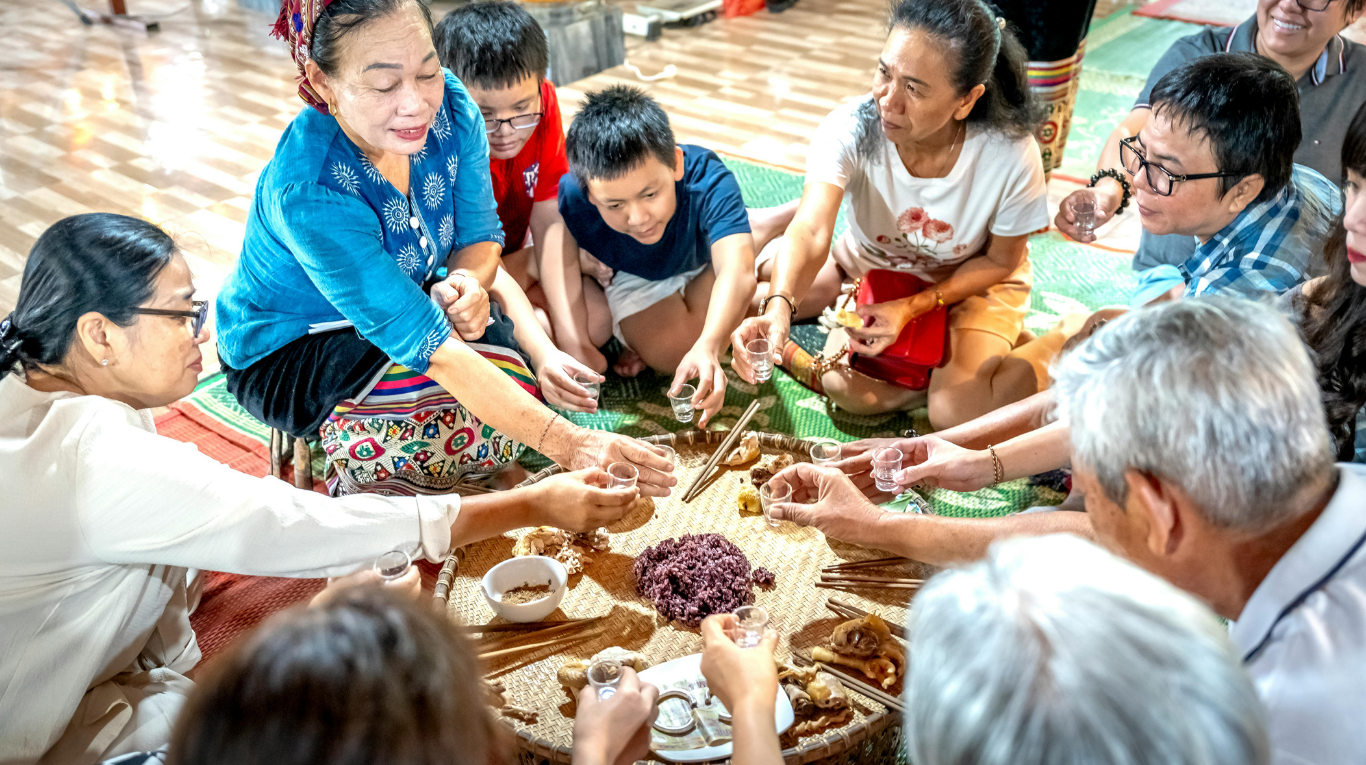
Food is culture you can taste. Every meal has a memory, and every choice keeps a story alive.
Food is more than fuel
What we eat shapes more than our health. It shapes who we are. Across the world, families pass down recipes, traditions, and ways of gathering food that connect them to land, water, and one another. When those foods disappear — replaced by processed imports and anonymous global products, something deeper is lost: the knowledge, pride, and belonging that come with them.
Eating that respects where food comes from
In many places, communities are rebuilding their independence by producing and preparing food in ways that reflect their culture and environment. From small-scale fishers to forest harvesters and local farmers, these are people feeding themselves on their own terms, using practices rooted in generations of learning. When you choose foods that come from such systems, you’re helping sustain not just livelihoods, but the languages, ceremonies, and stories tied to the land. For instance, 82.1% of hunters in Alaska strongly agree that the freedom to harvest wild meat is very important for their quality of life.
Food choice as cultural care
Every traditional ingredient, wild honey, millet, maize, venison, or river fish, carries centuries of adaptation and meaning. Supporting those foods means supporting the ecosystems and knowledge systems that created them. Buying directly from local producers, trying heritage varieties, or choosing wild-harvested and community-managed foods keeps those relationships intact. It shows that cultural value still has a place in modern diets.
Strength in self-reliance
When communities can feed themselves with what their landscapes naturally provide, they build resilience against global shocks. They stay connected to their land, maintain biodiversity, and keep young people engaged in traditional livelihoods that matter. That’s not nostalgia, it’s practical resilience: local food systems that protect both people and nature.
The quiet power of your plate
What you eat can either erode or strengthen the fabric of community life. Every choice sends a signal about what kind of world, and what kind of culture, we want to keep alive. So, the next time you cook or order a meal, think of it as an invitation: to honour the hands, knowledge, and lands behind your food.
Share the message
If this resonated with you, share it, and help others see that food is more than fuel.
References
· Wittman, H. (2023). An inclusive model for feeding the world. Current Research in Environmental Sustainability, 5, 100170. Available at: https://www.sciencedirect.com/science/article/pii/S2590332223001975
· Blue Bird Jernigan, V. et al. (2021). Community-driven food systems and health outcomes. Frontiers in Sustainable Food Systems. Available at: https://www.frontiersin.org/journals/sustainable-food-systems/articles/10.3389/fsufs.2021.704750/full
· Mobetty, F. et al. (2024). Indigenous food systems and community resilience. Public Health Nutrition / PMC. Available at: https://pmc.ncbi.nlm.nih.gov/articles/PMC11639103/
· Robertson, K. J. (2021). More Than a Meal: A Resource for Communities Building Food Independence. University of Vermont. Available at https://scholarworks.uvm.edu/cgi/viewcontent.cgi?article=1020&context=fsmpr
· Conservation Visions. 2024. Wild meat sharing and consumption index survey: Alaska. St. John’s (NL): Conservation Visions, Wild Harvest Initiative®